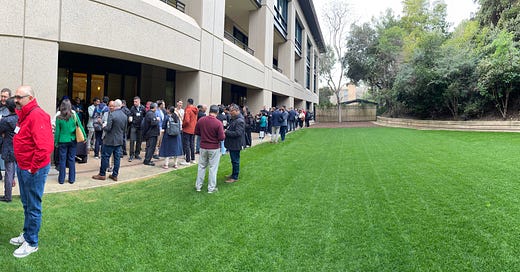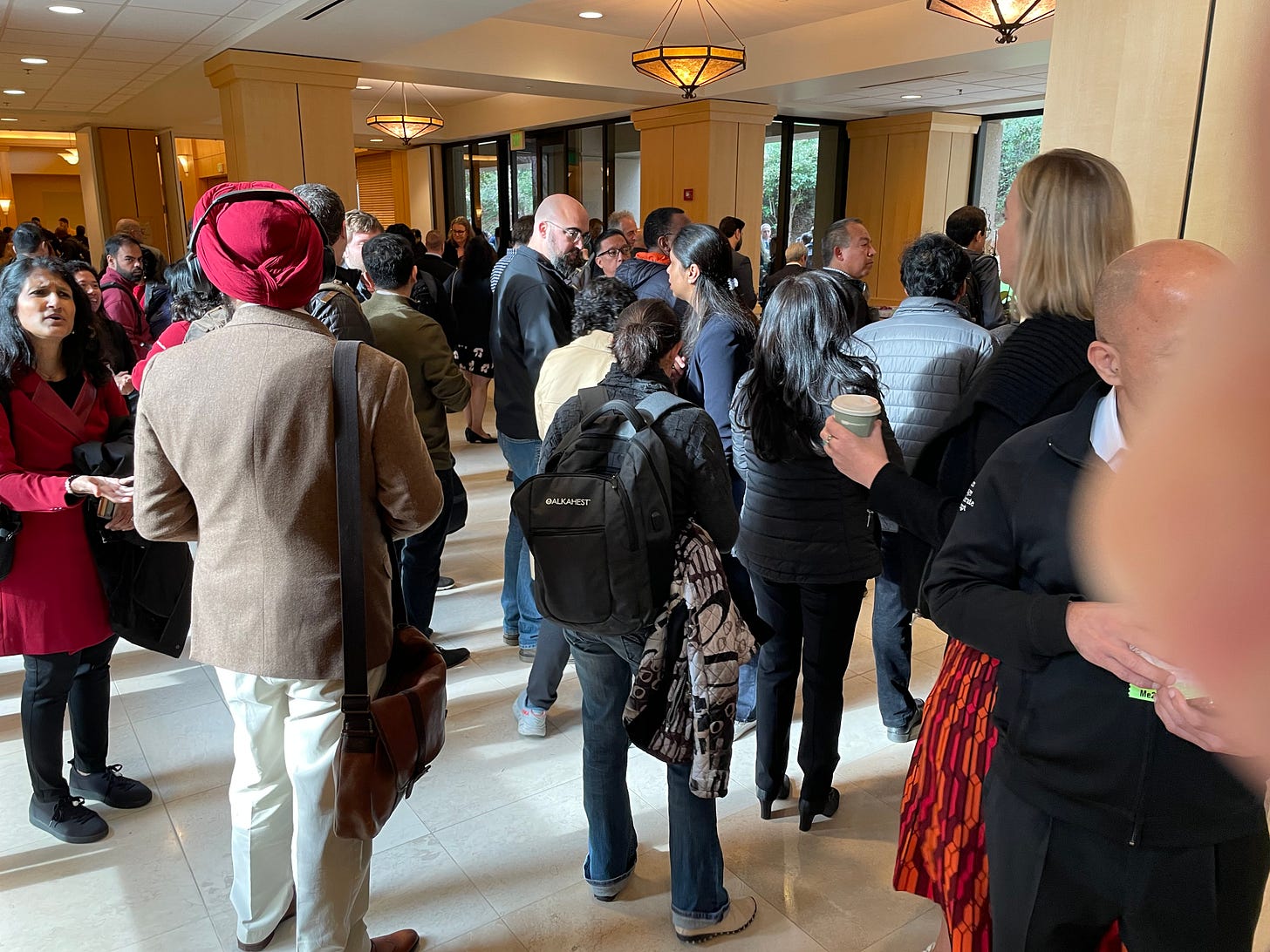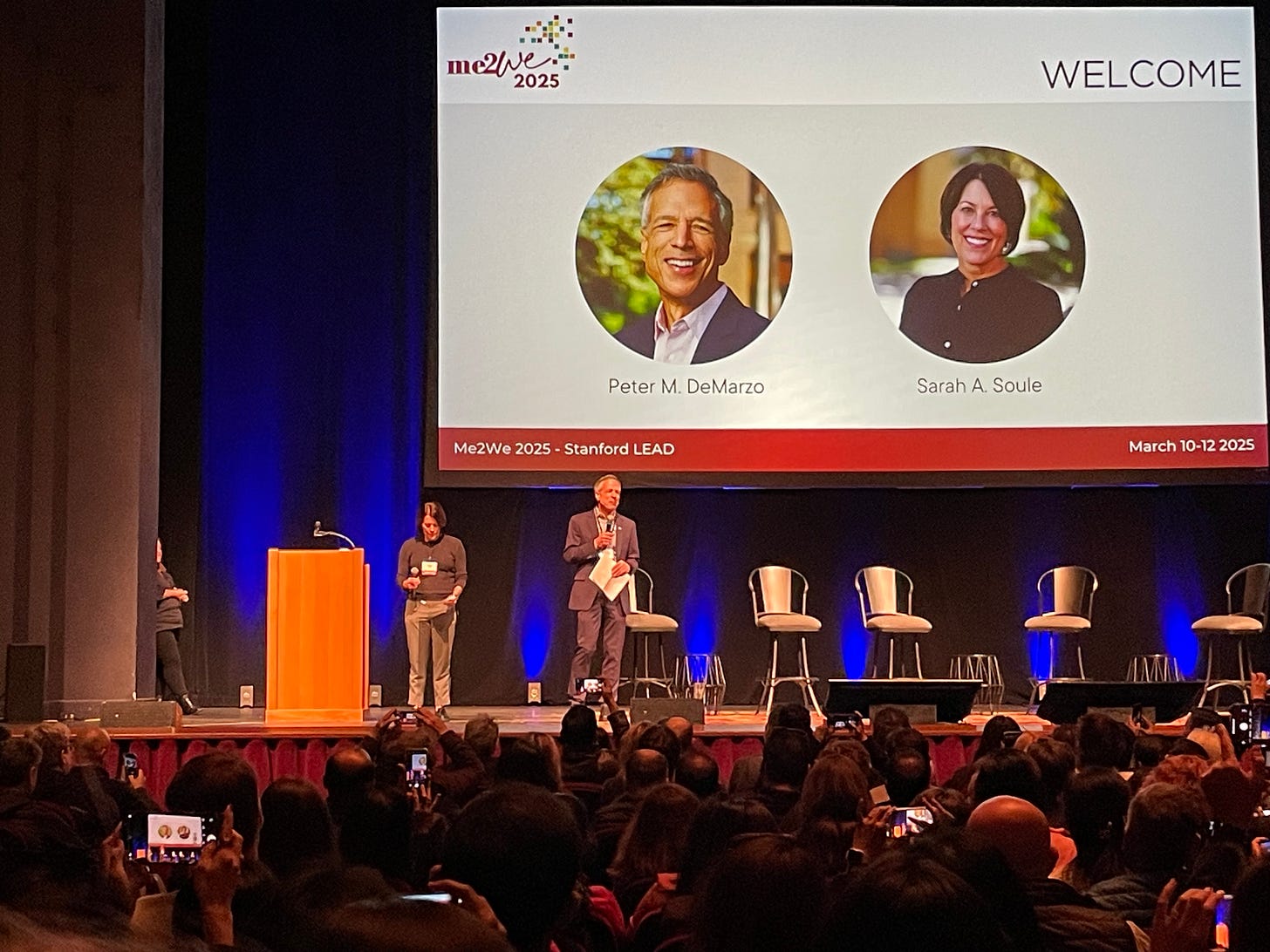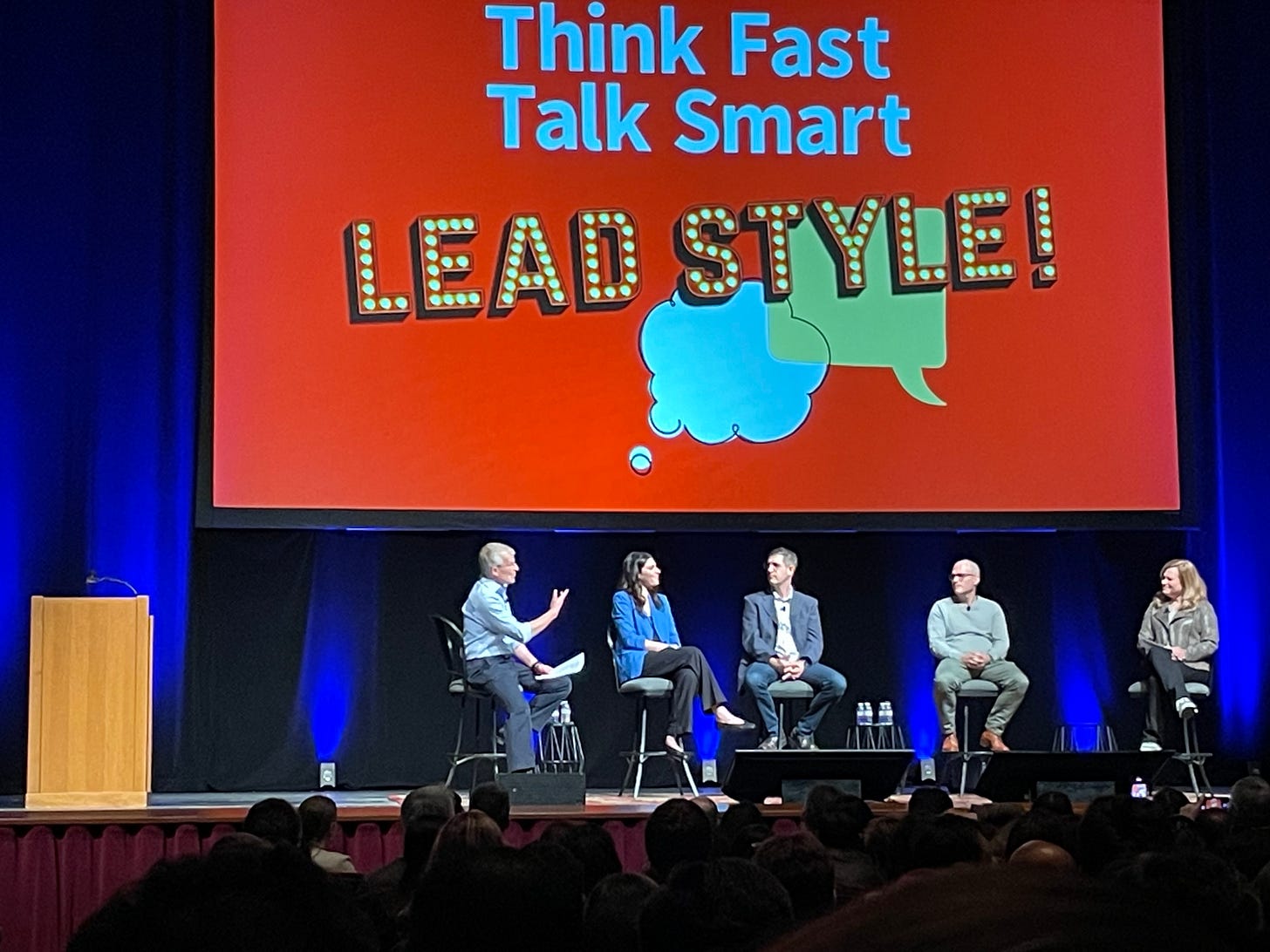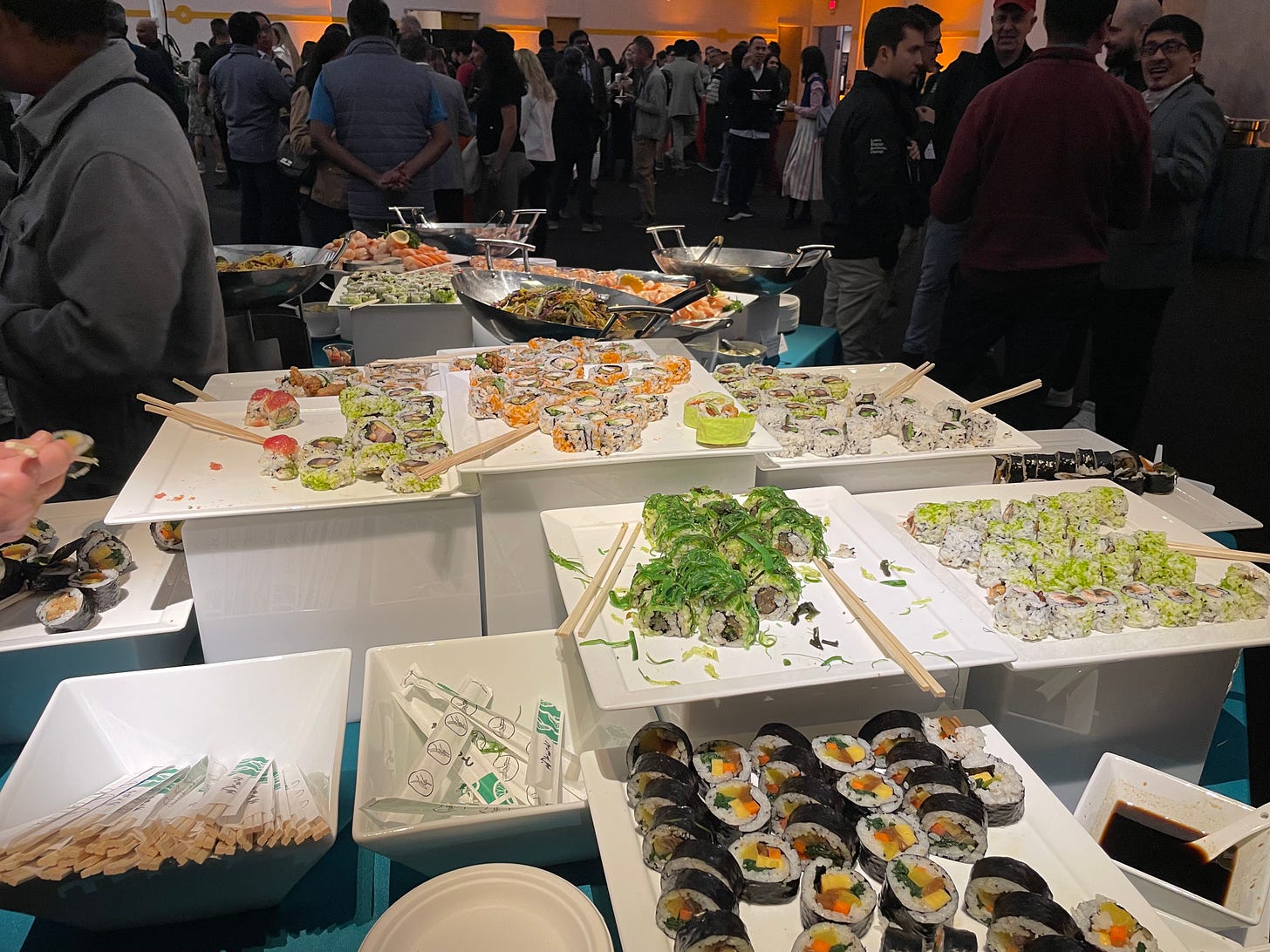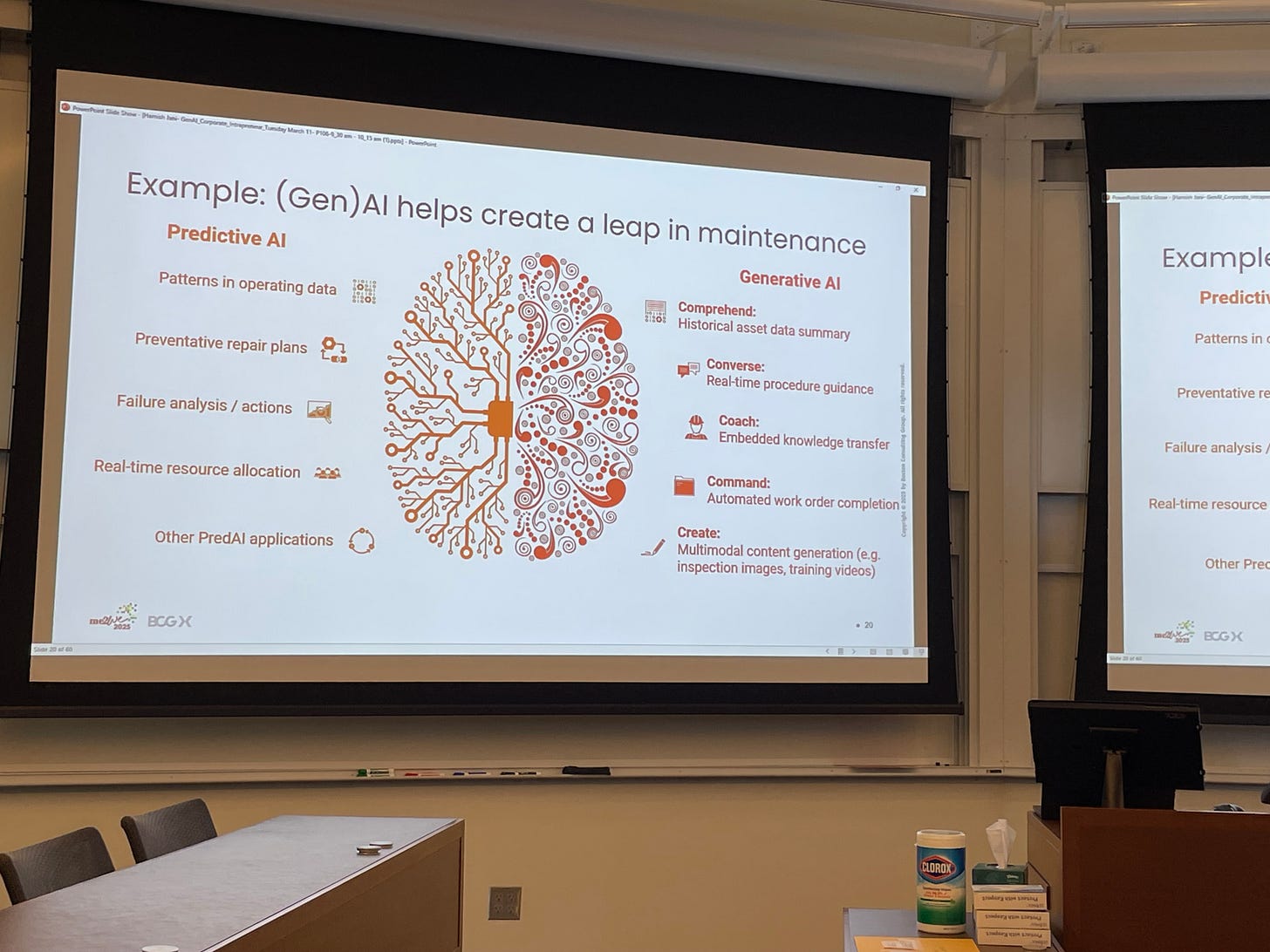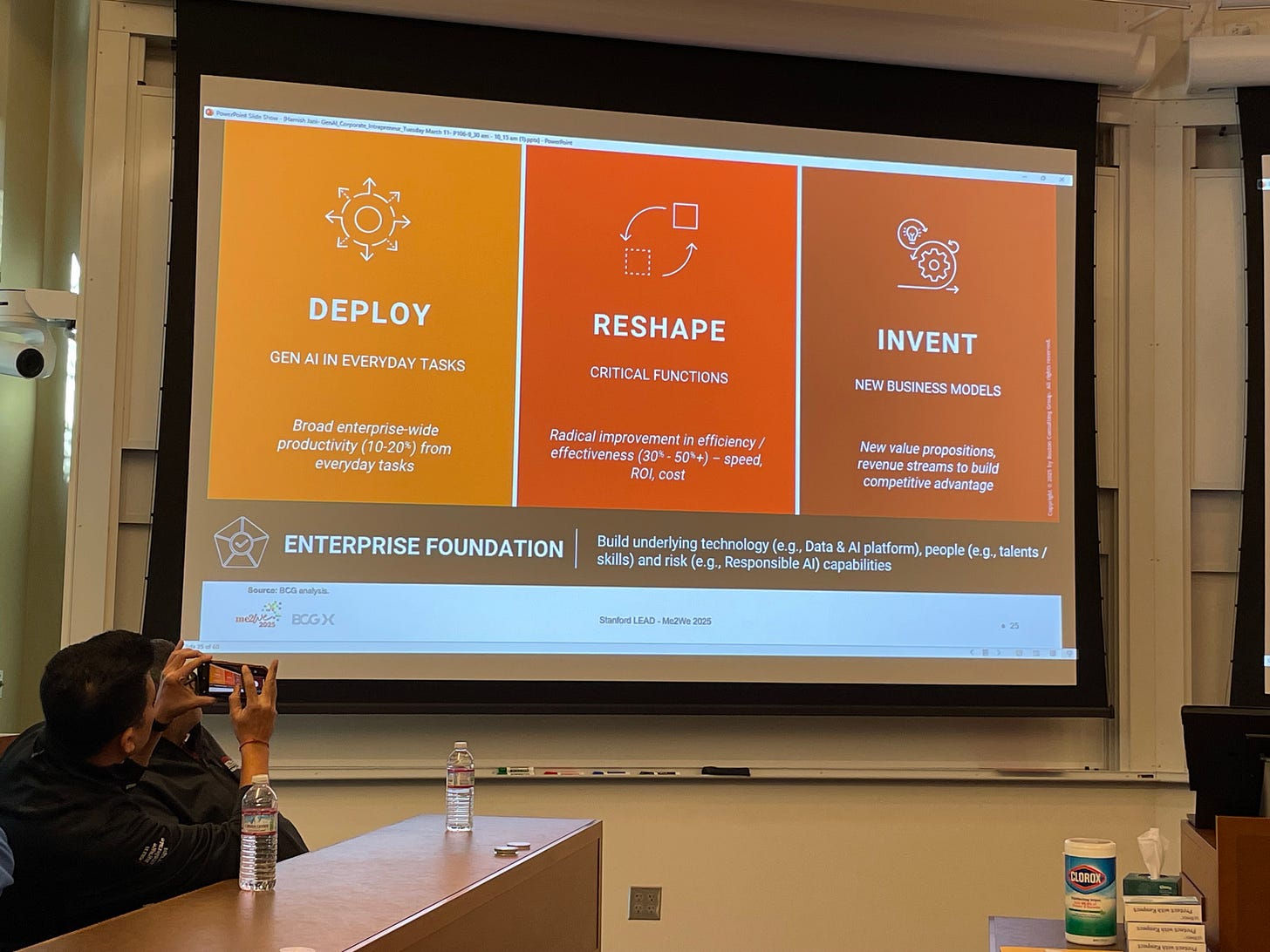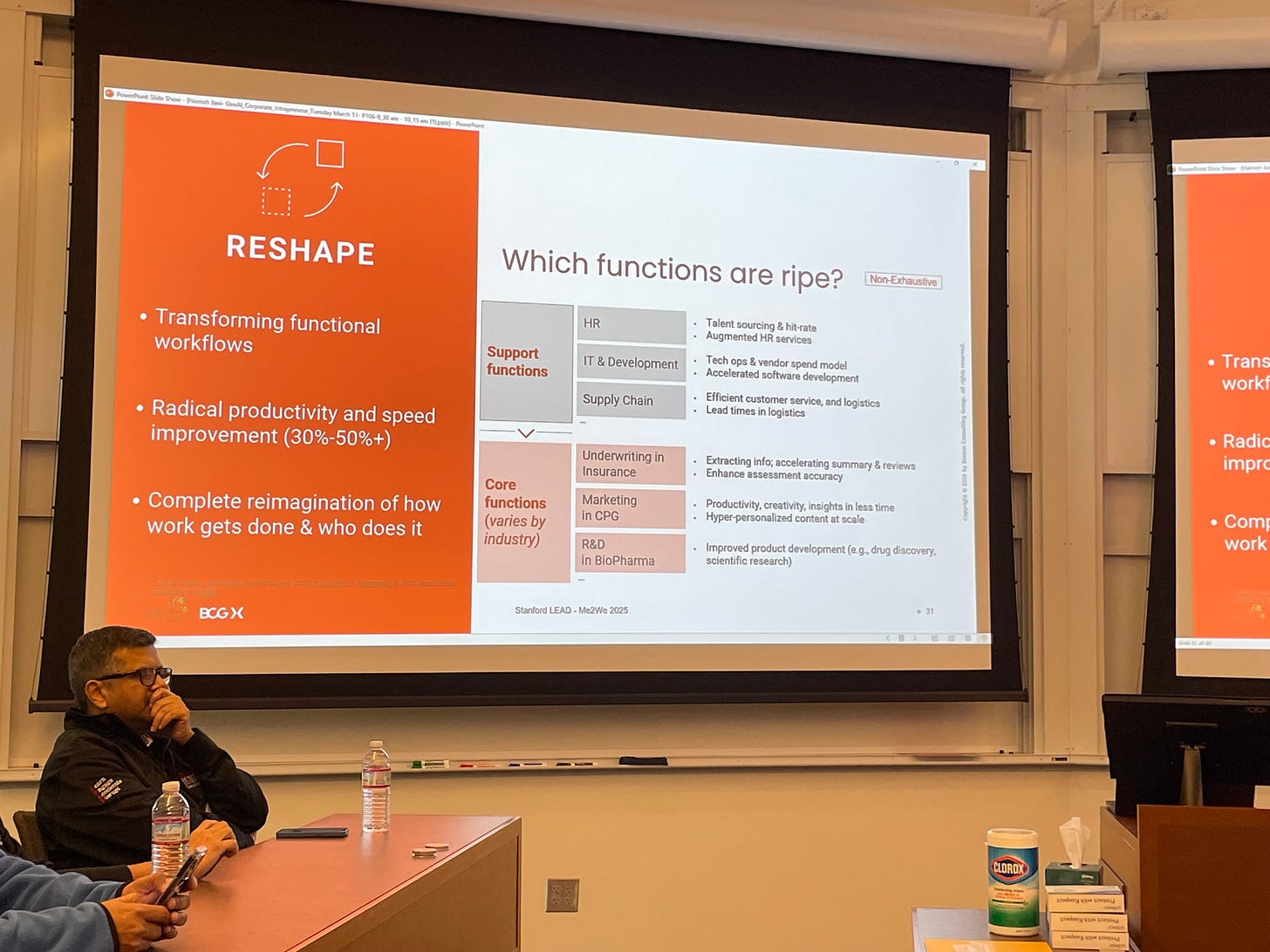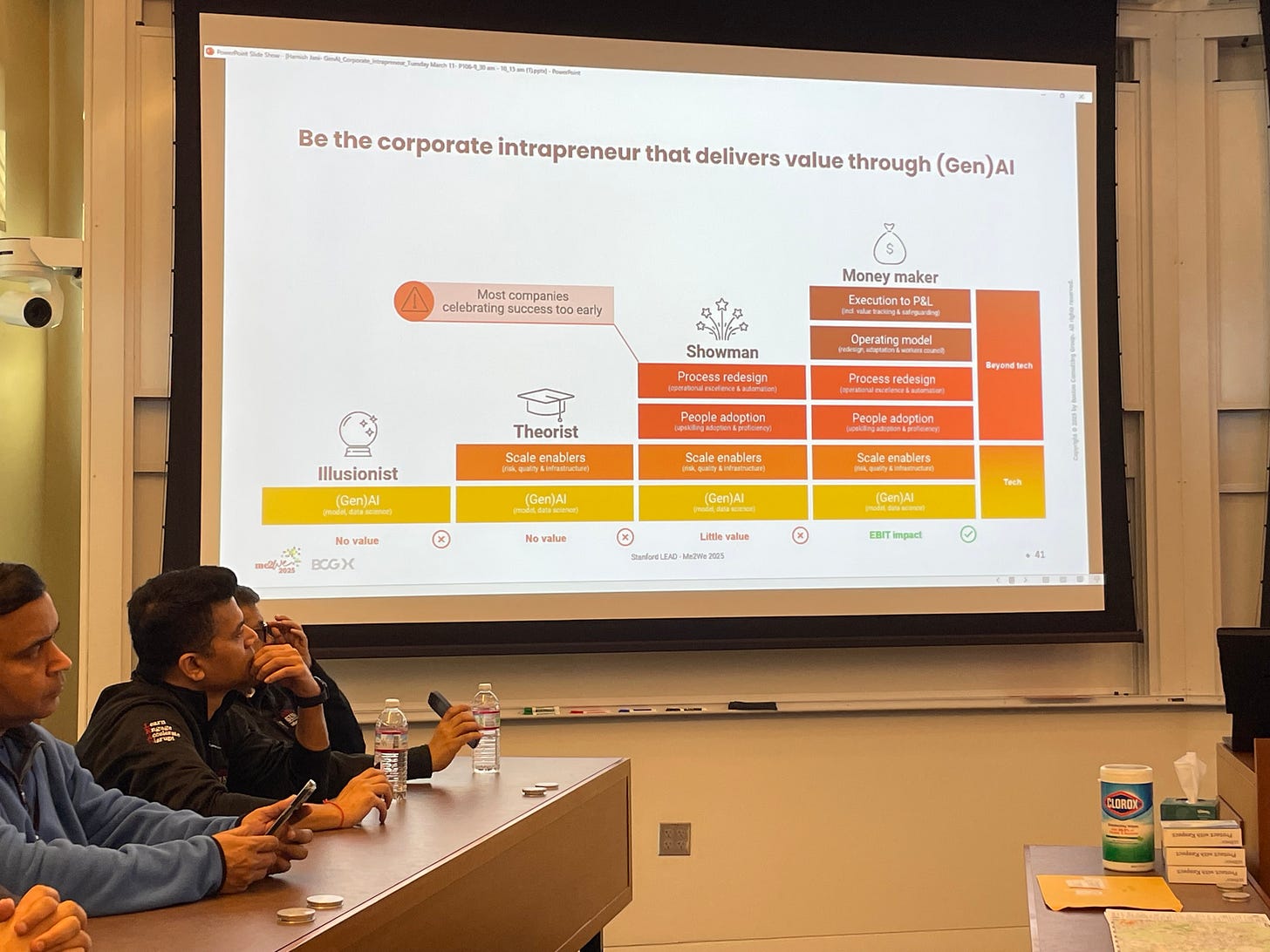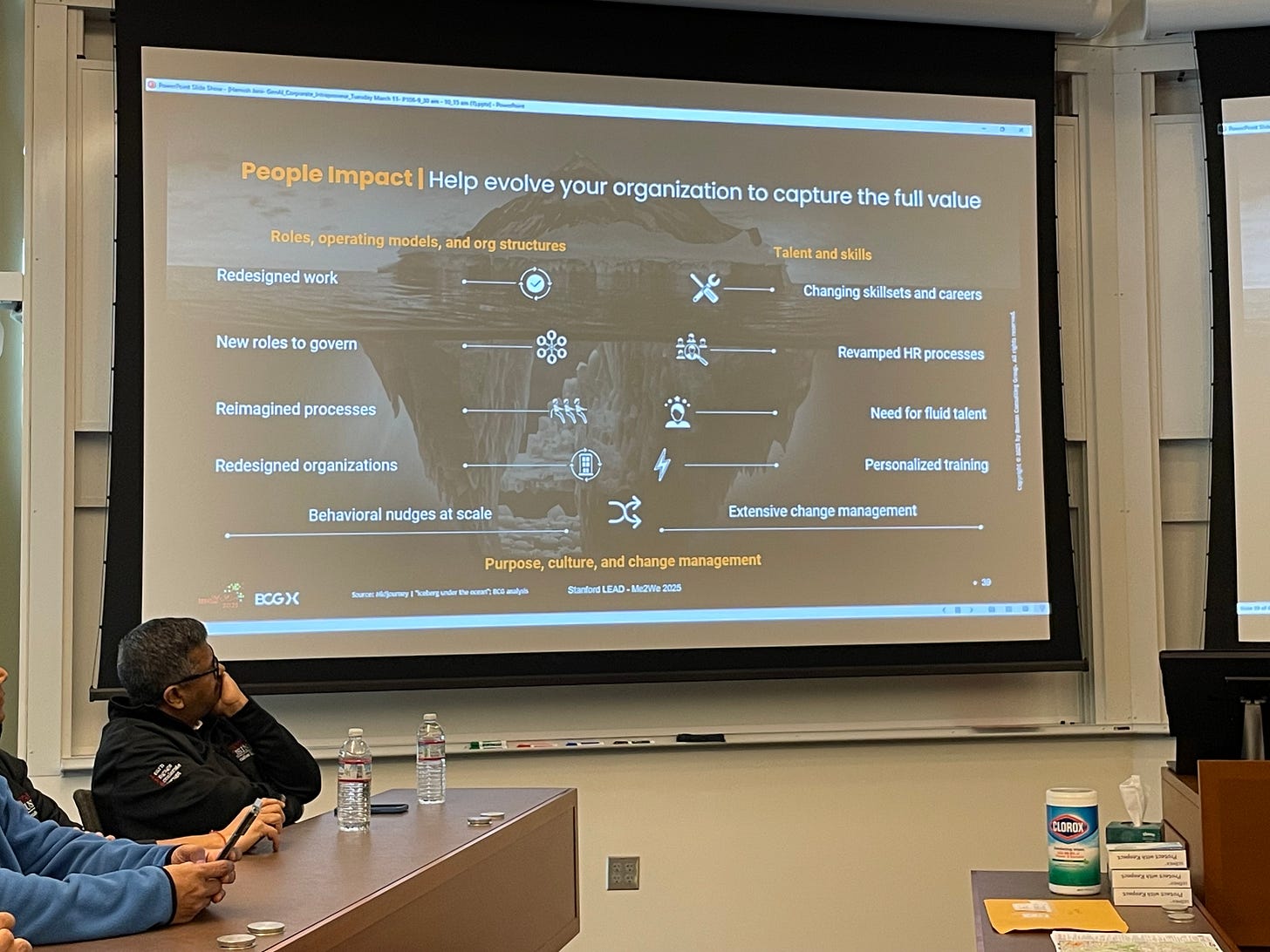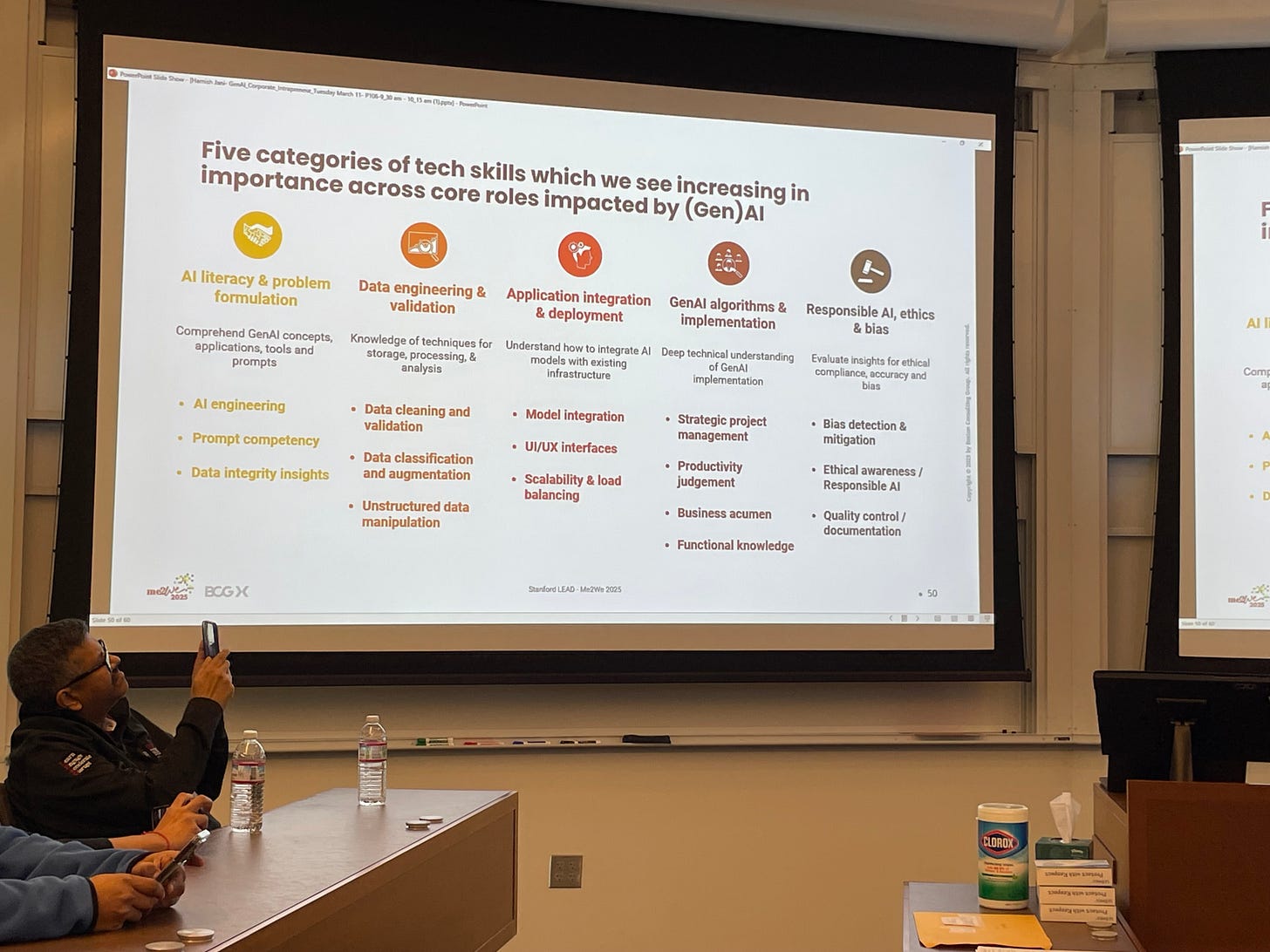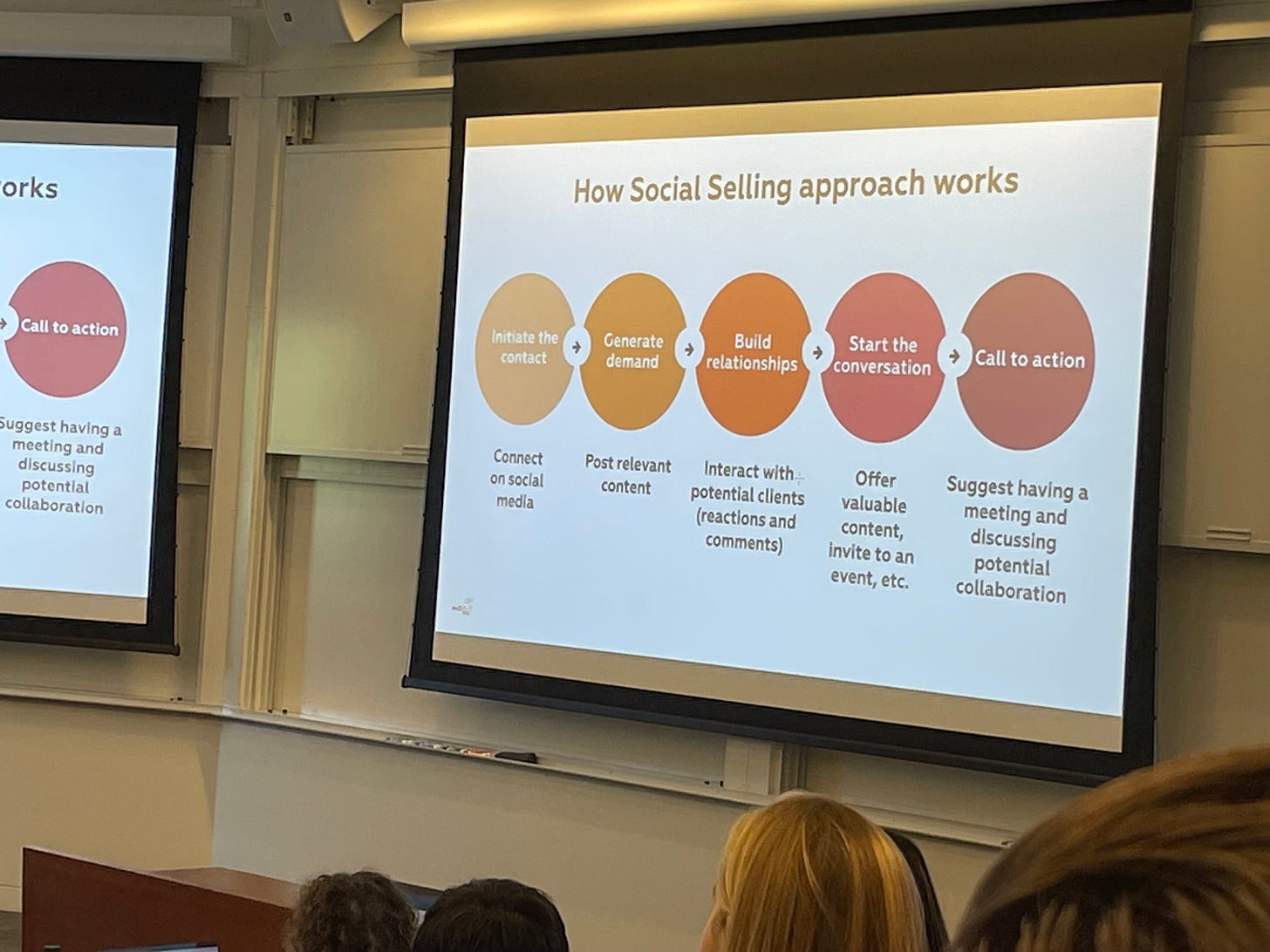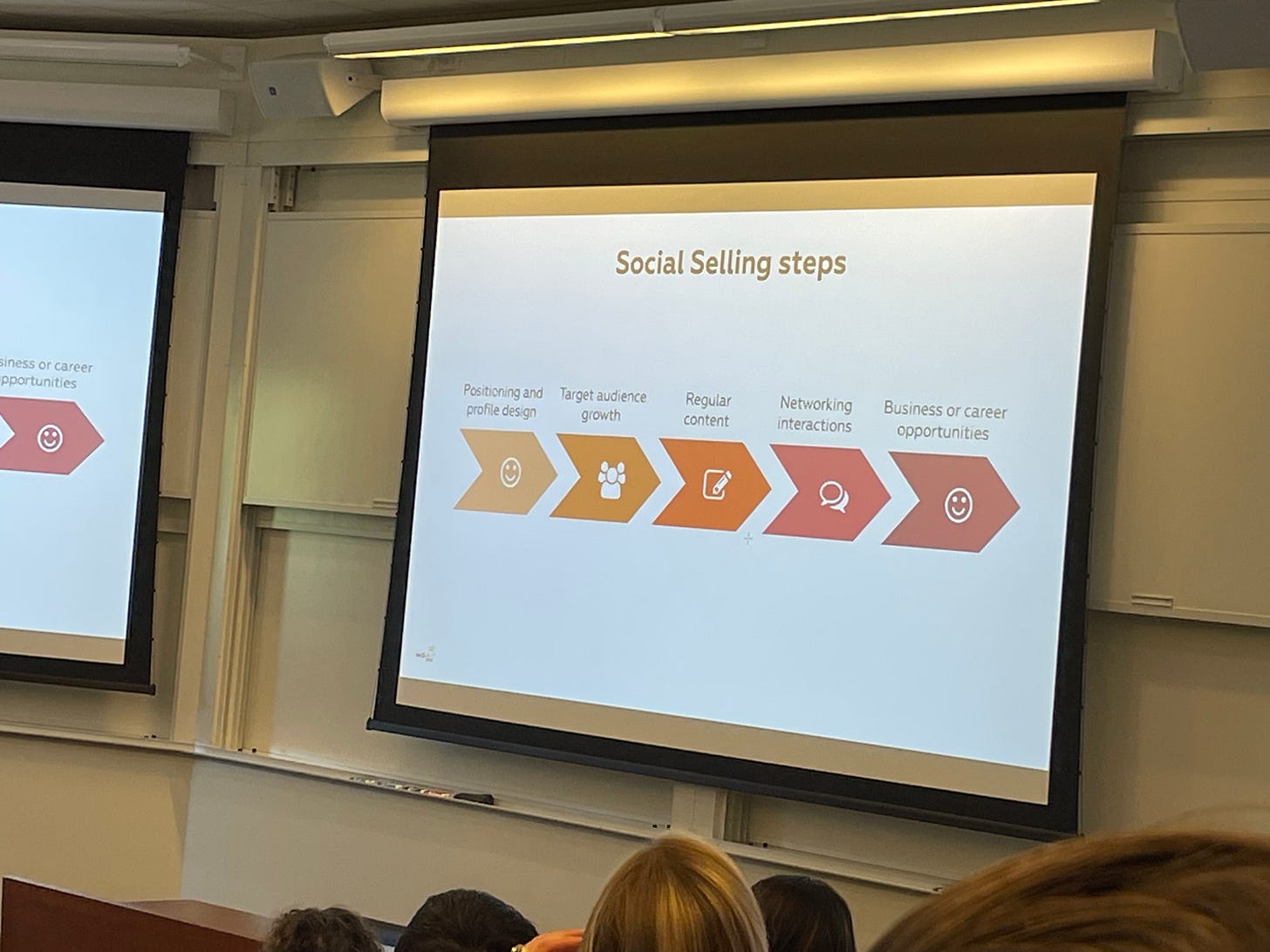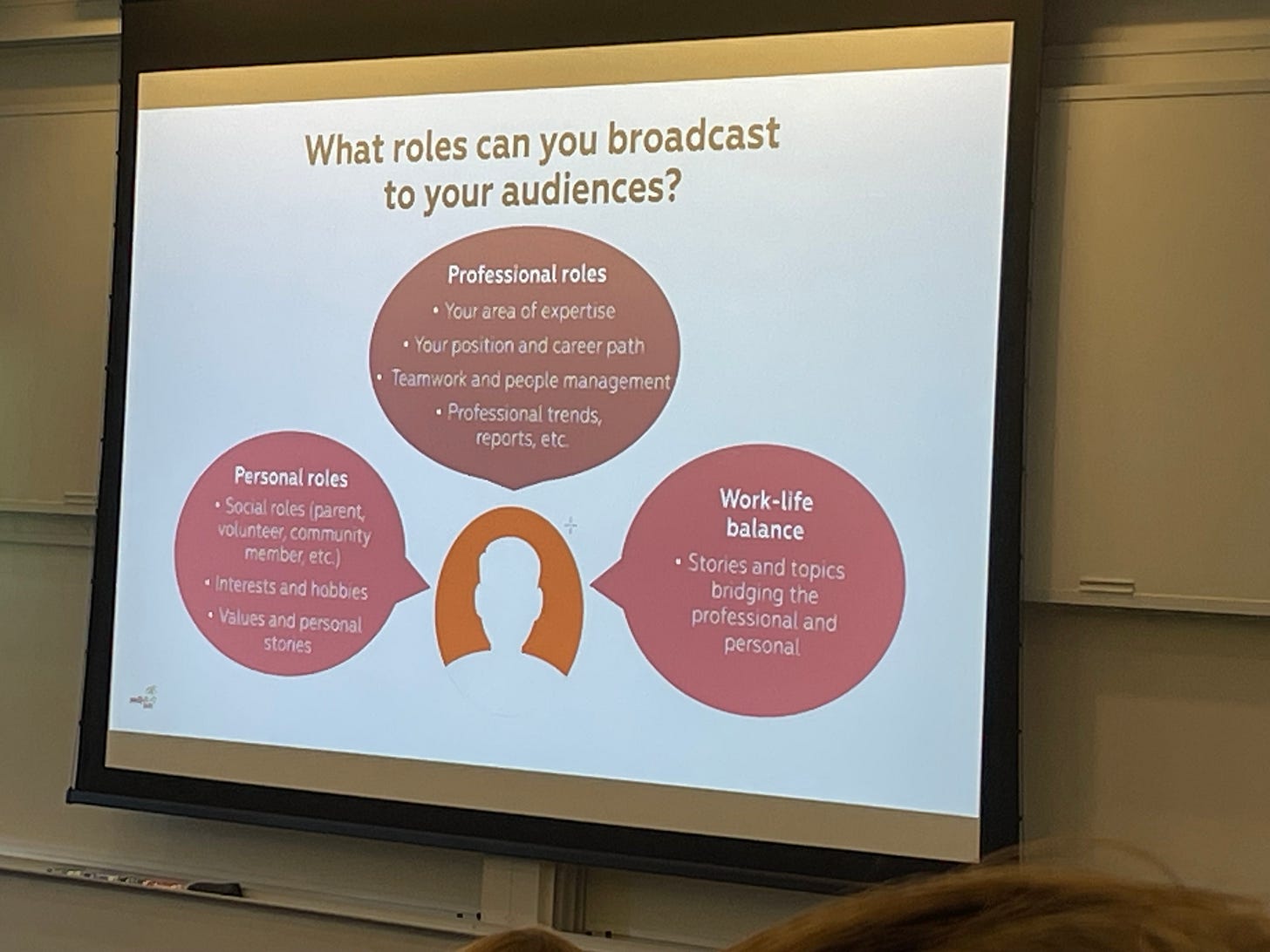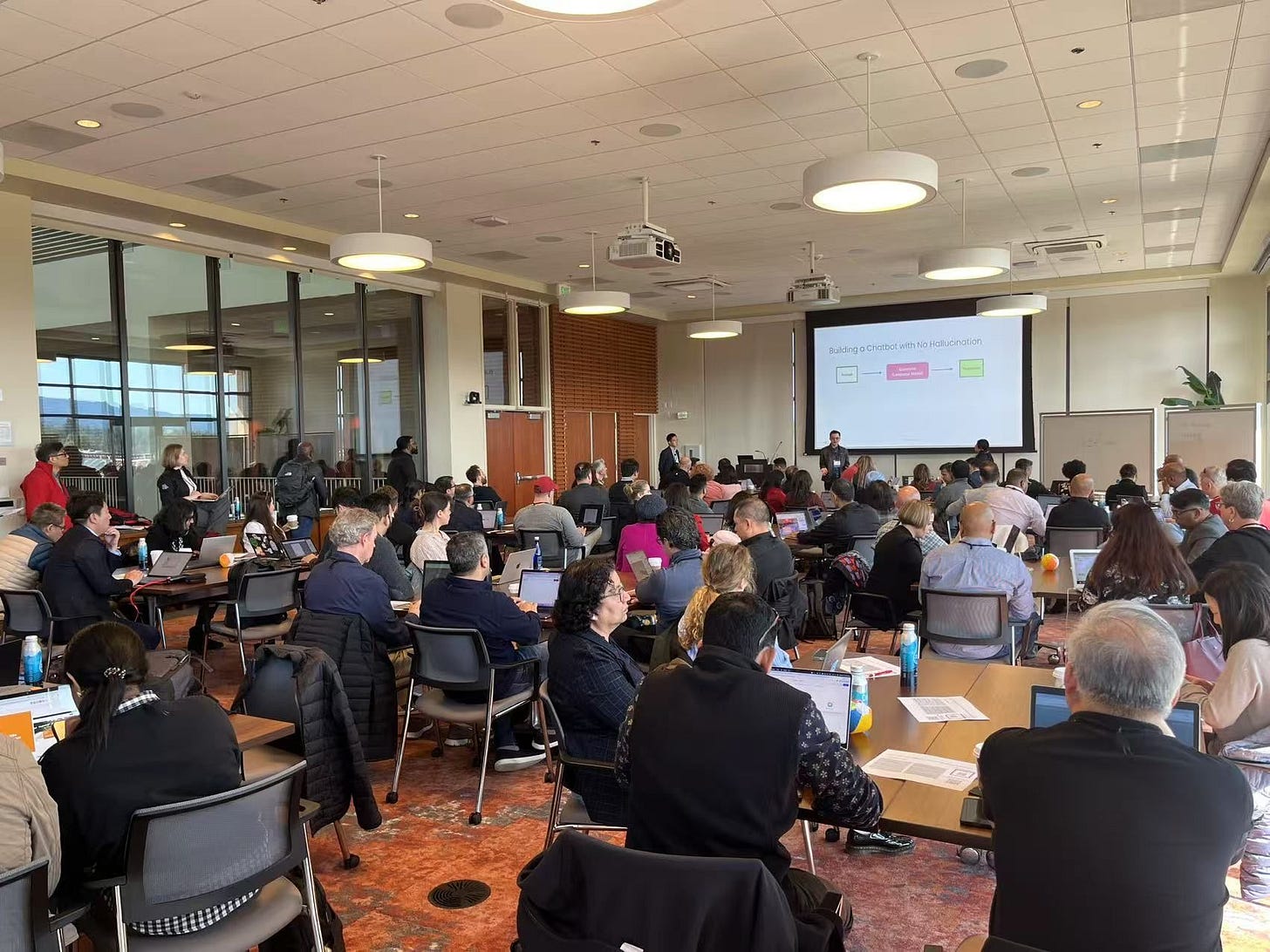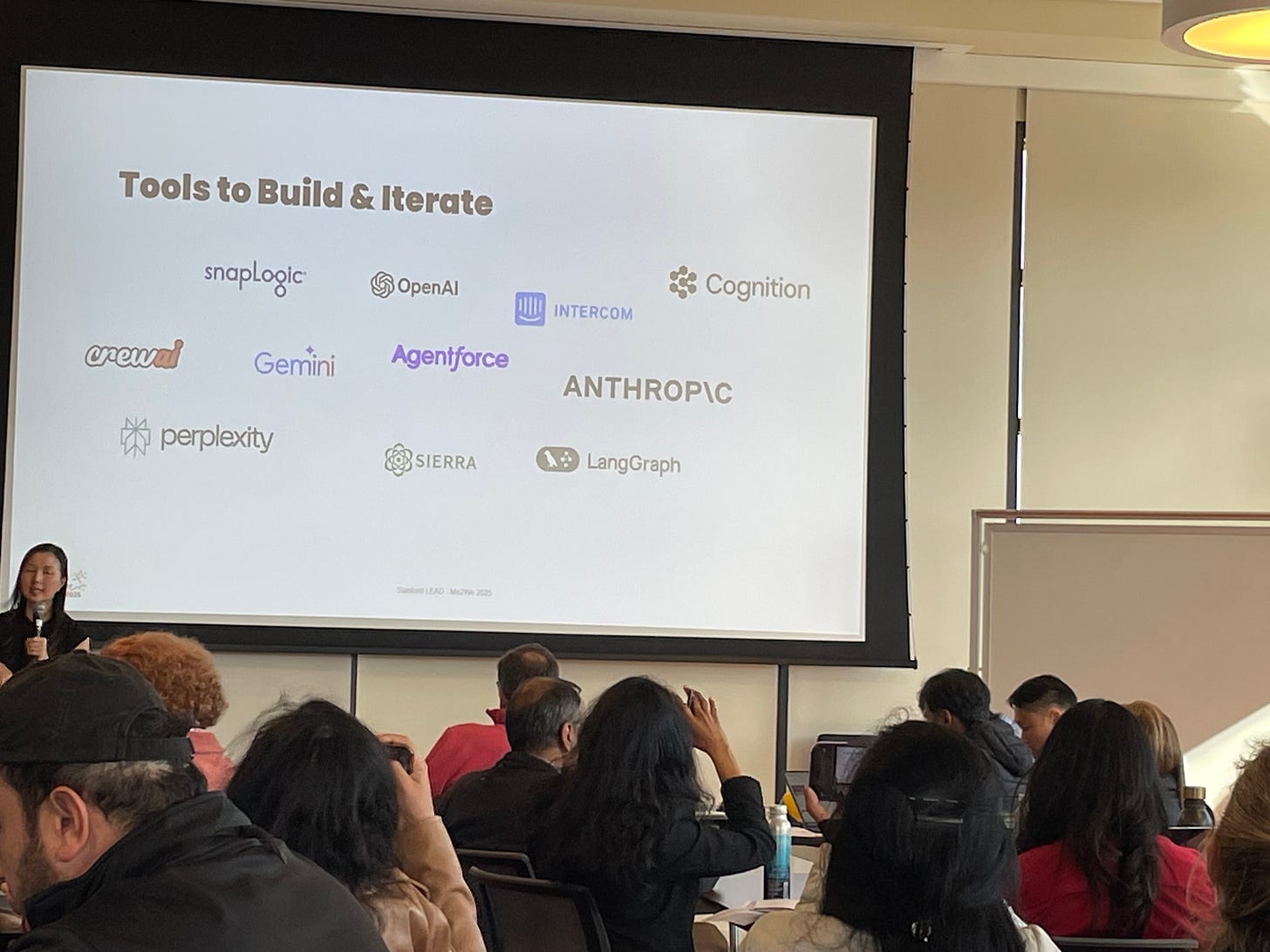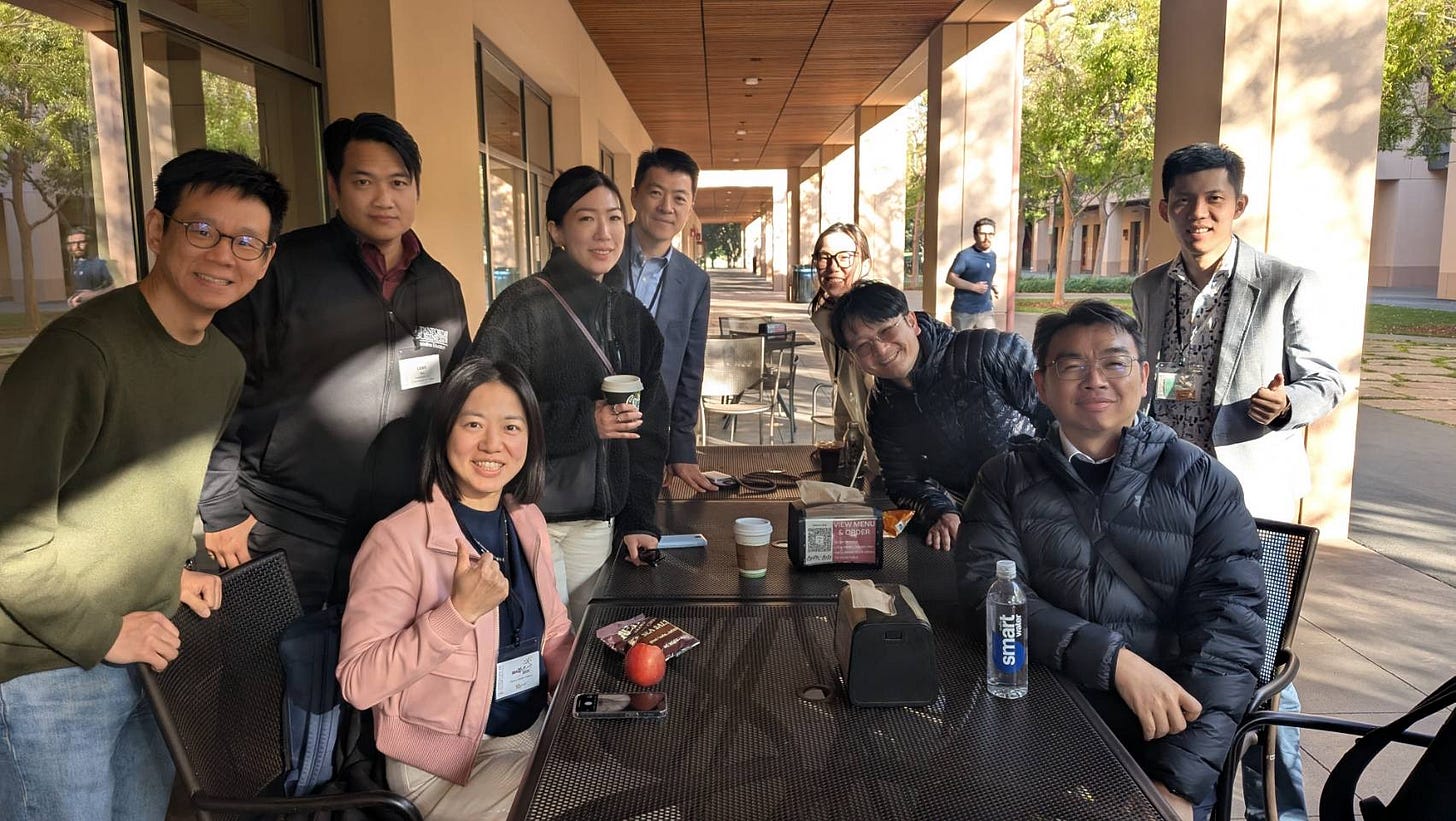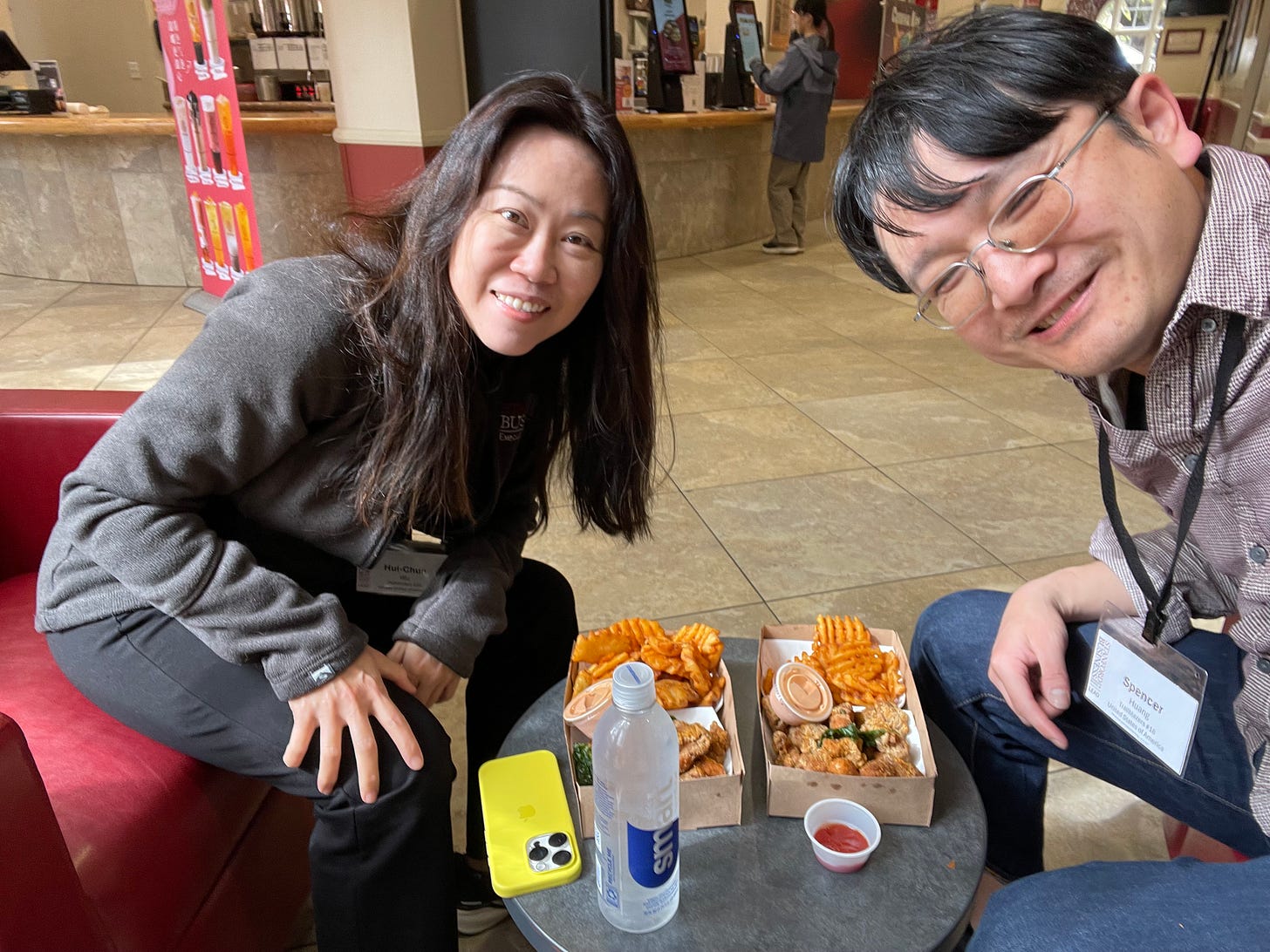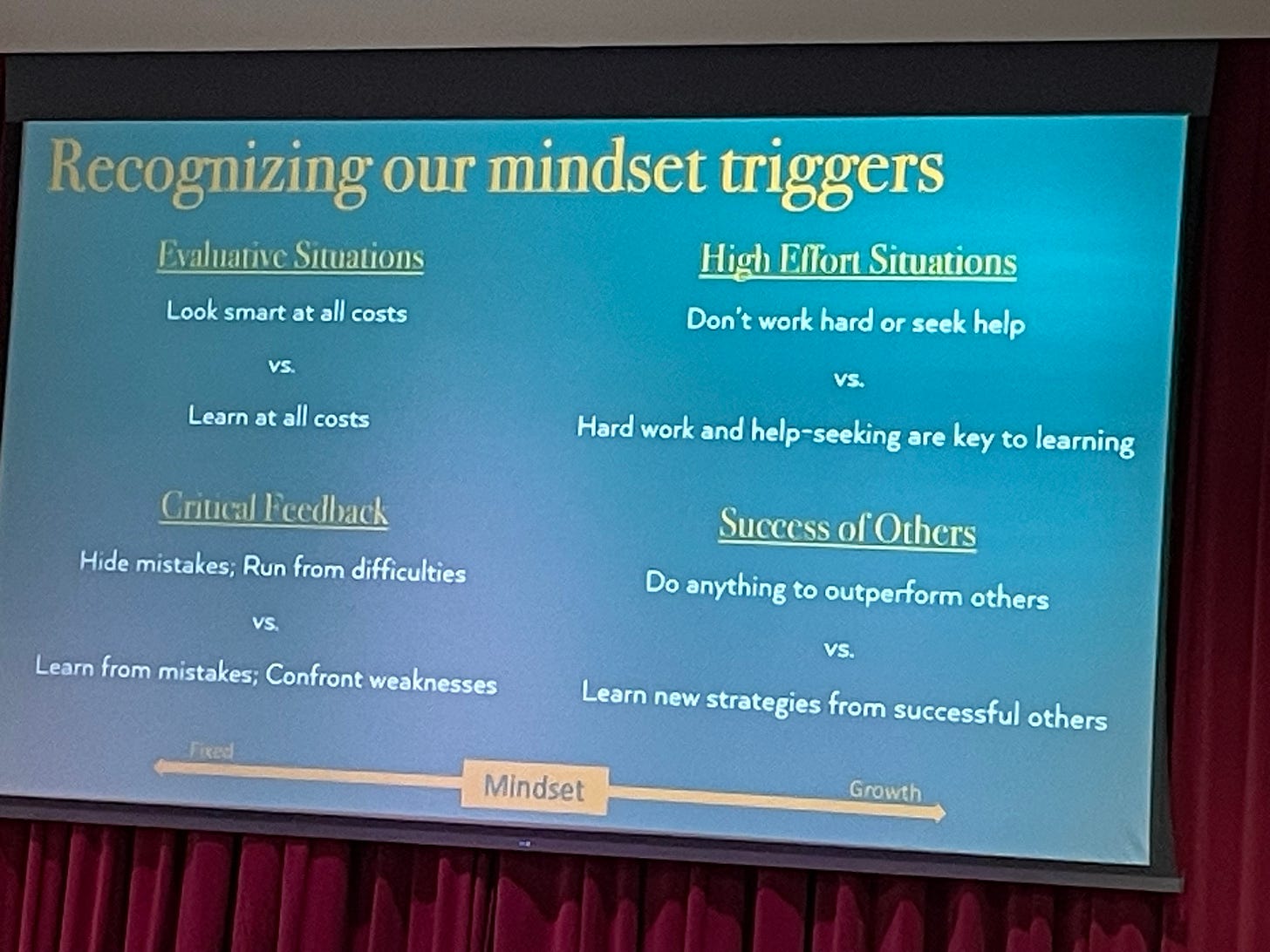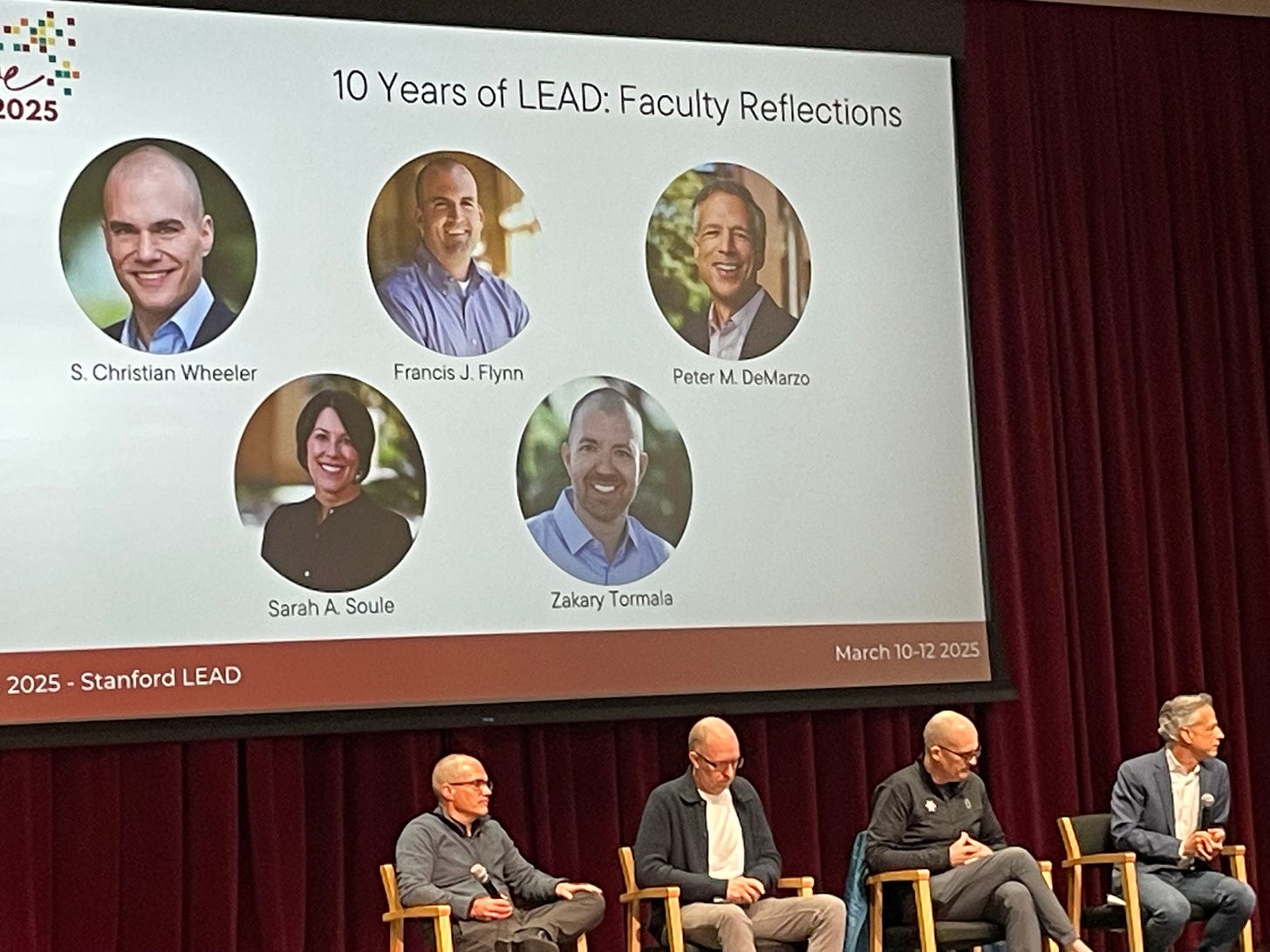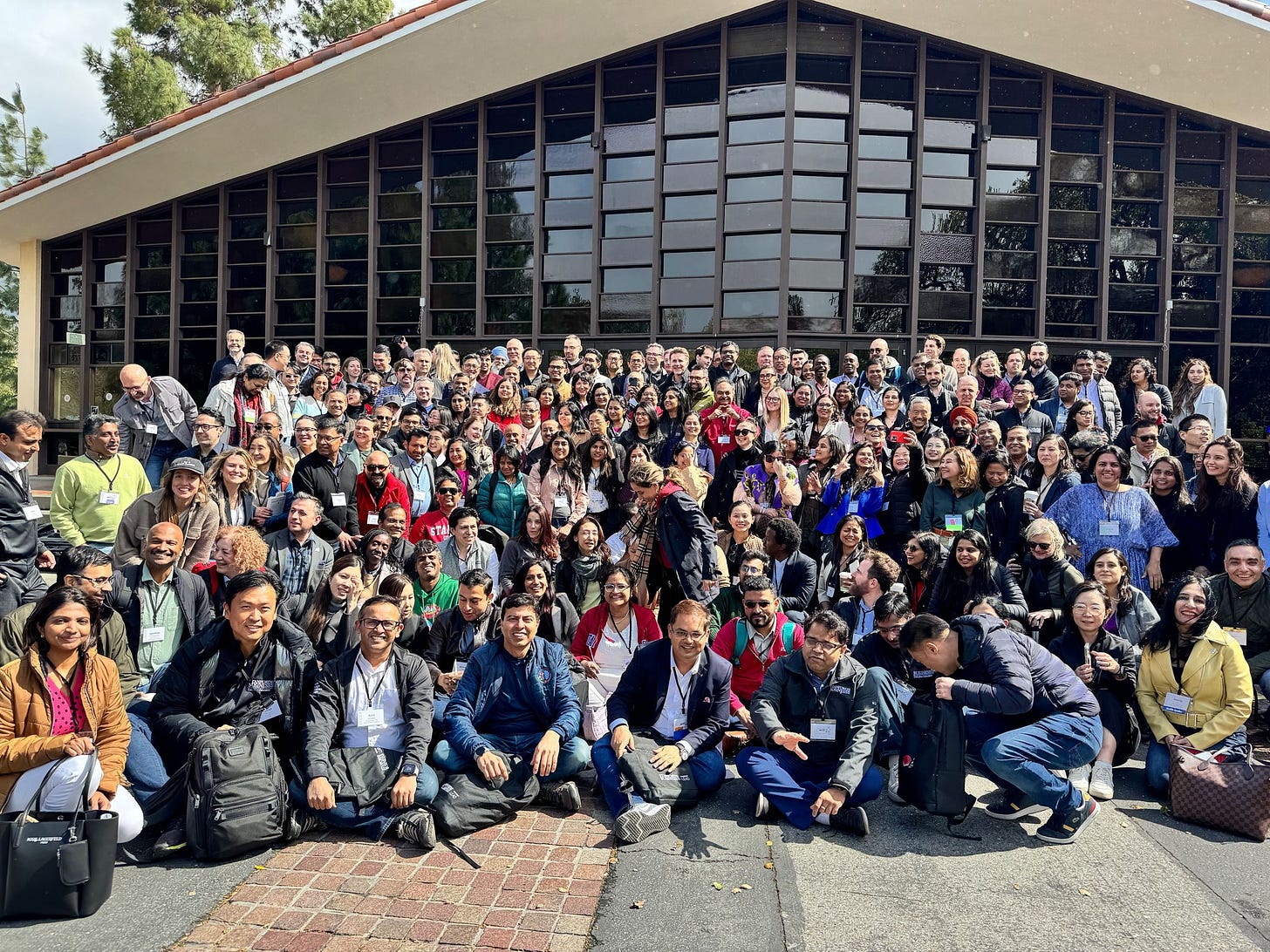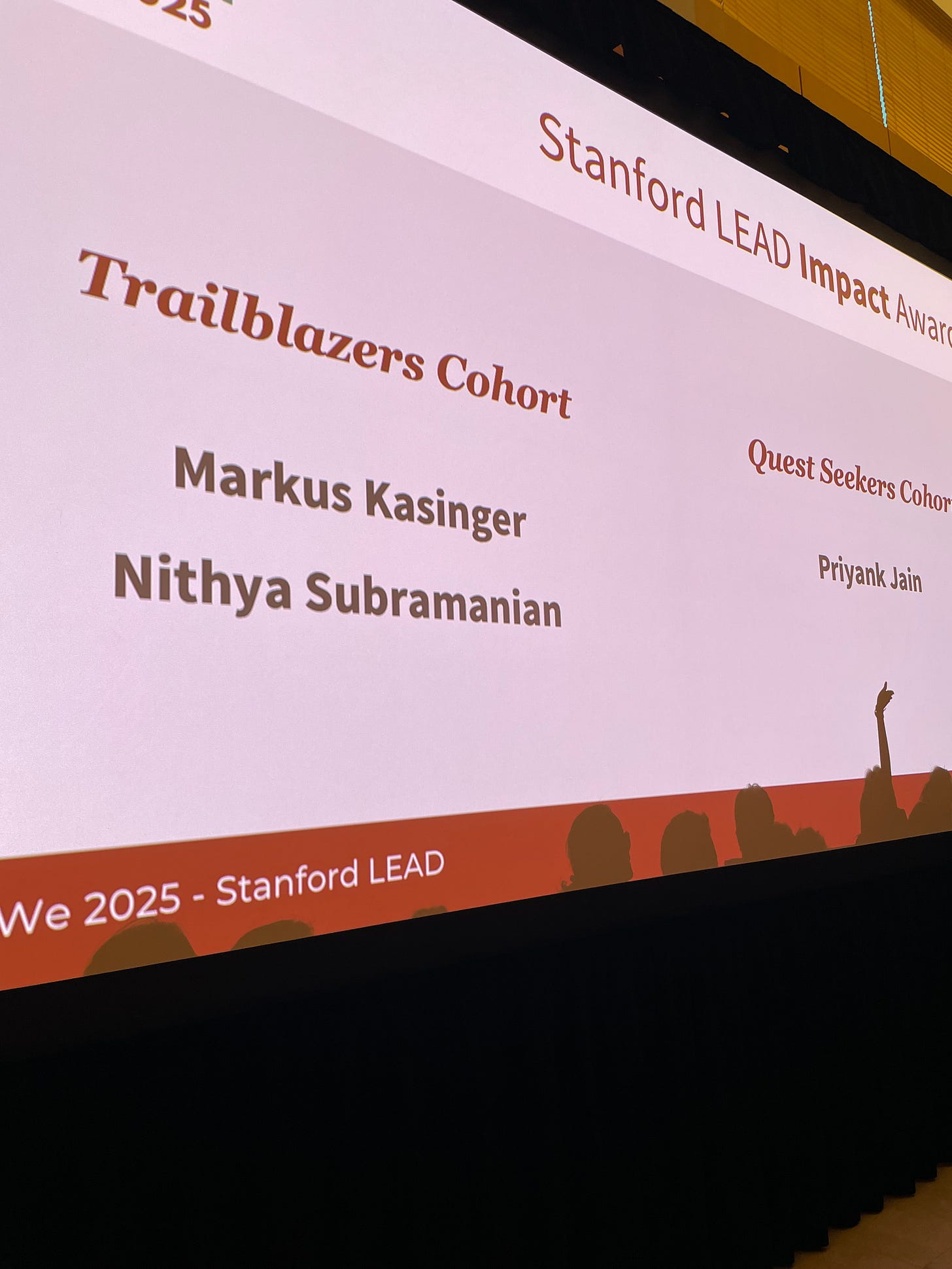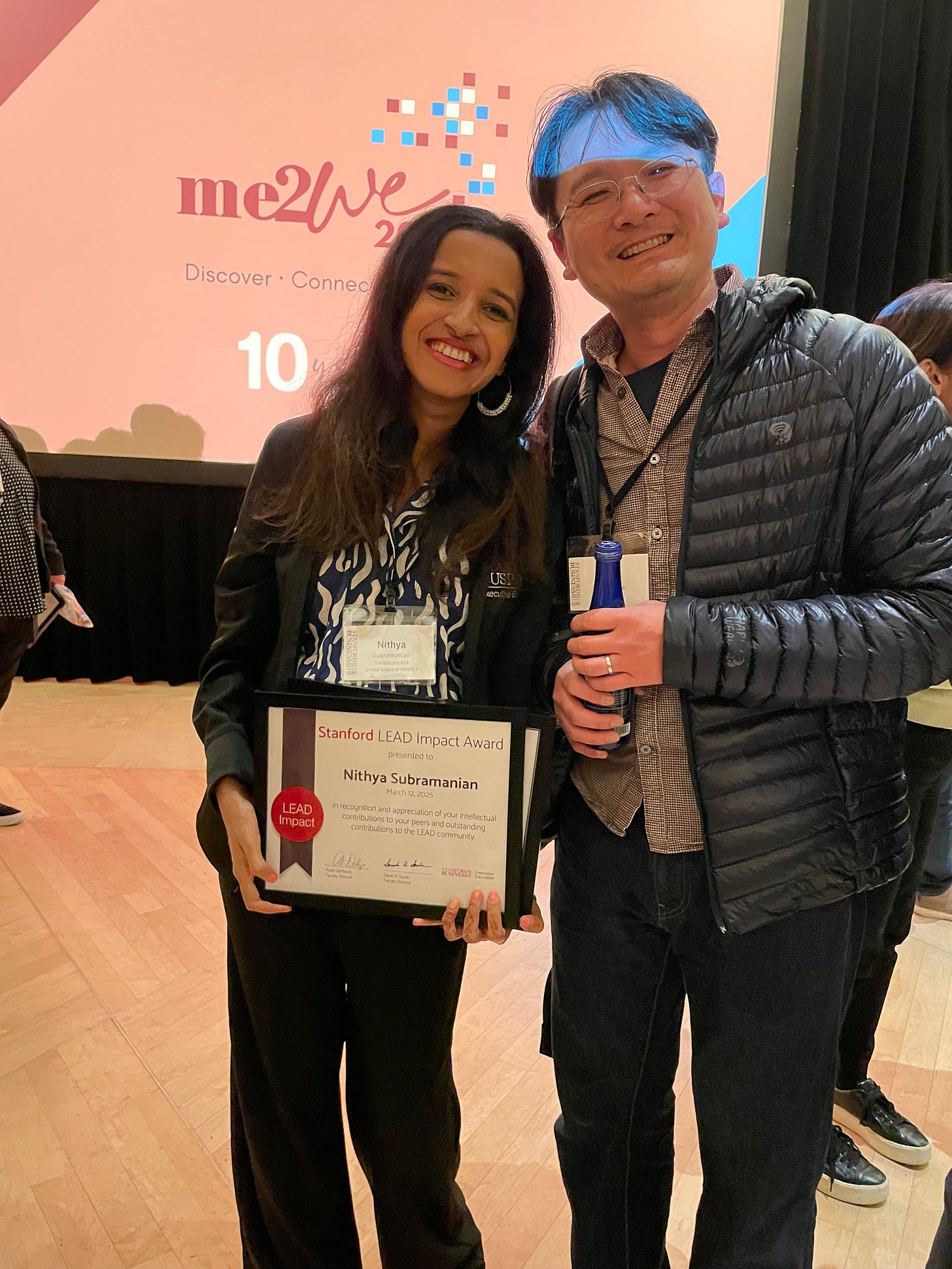Imagine a three-day whirlwind of reconnecting, learning, and being inspired. Welcome to me2we, Stanford GSB’s ultimate gathering for Stanford LEAD alumni. Each year, professionals from around the world return to campus to share knowledge, catch up with old friends, and finally put faces to Zoom screens. And this year? It was the biggest one yet, with over 700 attendees!
Right from the start, the energy was electric. We kicked things off at the Alumni Center, then moved to the Memorial Auditorium, where Professor DeMarzo joked that we’d soon need an even bigger venue, perhaps Maples Pavilion? By sheer luck (or destiny), I immediately ran into Luis and Jannie, then later reunited with Bhaskar on the final day. Jannie, by the way, has been an incredible supporter of my podcast, and I owe her big time!
As expected, most attendees were from similar class years. At GSB, each class has a name. I hail from the Trailblazer cohort, while the class after me is known as QuestSeeker.
Day 1: Friction Fixing, Fast Thinking, and Deep Conversations
We kicked off with a fascinating talk by Hayagreeva Rao on Friction Fixing, a concept that struck a chord. The key takeaway? We all have addition bias, the tendency to keep piling on instead of simplifying. But great leaders act like editors-in-chief, ruthlessly cutting out distractions. Rao even compared good friction to good cholesterol; as in it keeps things in check, preventing overconfidence and shortsightedness.
Next up was Matt Abrahams’ session, Think Fast, Talk Smart, packed with golden nuggets:
✔ Failure isn’t the enemy—it’s about failing without stacking failures on top of each other.
✔ First impressions are sticky—reputations form at the first point of contact and linger.
✔ Article titles phrased as questions? Bad for engagement. Who knew?
✔ Perfectionists aren’t memorable.
✔ Humor styles matter. Sniper humor? Use Self-deprecating humor wisely, especially in leadership roles.
By nightfall, we headed to the Computer History Museum, where I met some incredible people like Piotr, Tayssa, and Vijay (in no particular order). Over dinner, we got into topics rarely discussed at work, making for some of the best conversations. Bill from DoorDash shared a great story: After his wife took the neuroscience course from LEAD, her personality became way more relaxed!
And, of course, I had the pleasure of connecting with Fumi and Aya, two absolute international rockstars in their fields.
Day 2: AI, Main Character Energy, and Taiwanese GSB Powerhouse
For the second day, my strategy was simple: if a panel had “AI” in the title, I was there.
First up was Harnish Jani’s talk on (Gen) AI disruption, which was impressively structured. Then came Rajesh’s talk on being the main character, and let me tell you, his energy was contagious.
The key points from Harnish are as follows:
“We didn’t do anything wrong, but somehow we lost” - Stephen Elop, Nokia
In other words, many are ambitious, not audacious.
“In a VUCA (Volatile, Uncertain, Complex, and Ambiguous) world, if you’re not consciously confused, you’re ignorant.” - Roger Splitz
The 6-C areas in which (Gen) AI covers are:
Comprehend - i.e., summarization agent
Converse - i.e., ChatBot
Coach - i.e., writing/painting agent, mock-interview agent, converging on something artistic over iterations
Code - self-explanatory
Command - chart drawing, number analyzing
Create - Traditional AI is left-brain, predictive with ML. Generative AI is right-brain.
The hard part is to be able to provide products and services that are reshaped or invented with (Gen) AI incorporated.
During lunch I got to meet Megha, who gave me plenty of great feedback on my assignments, it was nice catching up with her. I debated between a session on Social Selling with Olga and an AI hands-on workshop with Yihua and Vincent, I ultimately chose the latter. To my surprise, building AI agents has become so templated that we created chatbots within minutes. The pace of tech right now is mind-blowing.
Later, Tiffany led a thought-provoking session on the future of AI and measuring AI’s performance.
As the day wound down, I finally met up with my fellow Taiwanese GSB crew, giving a shoutout to James, Tien, Wallace, Annie, Hui-chun, Ruby, Jasmine, Twain, and Leon (again, in no particular order). You’re all incredibly successful in your ways, and I’m proud to be in this circle.
The night ended with a Jeffersonian dinner, where I had deep conversations with Wayne, Liez, and Cenk. These discussions left me with some serious food for thought on personal issues that money alone can’t solve.
Day 3: Fighting Cynicism and Unexpected Reunions
The final day greeted us with unpredictable on-again, off-again rain. But that didn’t dampen the spirit.
The standout session for me was by Jamil Zaki on fighting cynicism. Let’s be real; it’s easy to critique, especially from behind a keyboard. But he emphasized the importance of distinguishing constructive feedback from pure cynicism, a lesson that applies far beyond business. The faculty reminded us that the difference between LEAD and MBA students is that the LEADers apply what they have learned in their daily work immediately; the feedback is incredibly quick. This means that it is essential to be able to recall what we have learned and then apply these concepts daily, otherwise, it’s just knowledge sitting in a dark corner of my brain.
Somewhere in the rain, I ran into Rik and Jenelle, and even from our brief chat, I could tell they were rising stars.
Then, the universe worked its magic. I got to meet Umbreen and reunited with Adrian from my cohort. Words don’t do justice to how much they have accomplished, but trust me, they are people you want to learn from.
Final Celebration & Takeaways
As the grand finale, we had a celebratory dinner, where I reunited with Nithya, a fellow Trailblazer whose accolades were well-deserved.
Looking back, Me2We wasn’t just about professional growth; it was about reconnecting, sharing, and realizing just how vast and powerful the GSB network is. Until next time!

